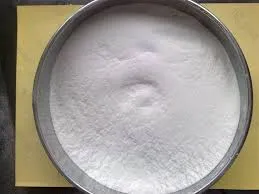
жнів . 05, 2024 10:56 Back to list
Understanding the Solubility of Hydroxyethyl Cellulose in Aqueous Solutions for Various Applications
Hydroxyethyl Cellulose Solubility in Water An Overview
Hydroxyethyl cellulose (HEC) is a non-ionic, water-soluble polymer derived from cellulose, a natural polymer found in plant cell walls. As a modified form of cellulose, HEC retains many of the fundamental properties of its parent compound while gaining additional functional characteristics that make it highly versatile in various applications.
One of the most remarkable attributes of HEC is its solubility in water, which is crucial for its use in pharmaceuticals, cosmetics, food products, and industrial applications. Understanding the factors that influence the solubility of HEC in water is essential for optimizing its performance in these areas.
Solubility Mechanism
The solubility of HEC is primarily attributed to its chemical structure. The hydroxyethyl groups attached to the cellulose backbone introduce hydrophilic characteristics, allowing water molecules to interact with the polymer chains. In aqueous environments, the hydrogen bonds formed between water molecules and the hydroxyl groups on HEC result in the disruption of the intermolecular hydrogen bonding present in crystalline cellulose. This disruption facilitates the dissolution of the polymer in water.
The degree of substitution of hydroxyethyl groups along the cellulose chain significantly affects the solubility of HEC. Higher degrees of substitution generally lead to an increased solubility due to a greater number of hydrophilic sites, enhancing the interaction with water. However, there is a balance; excessively high substitution levels may lead to instability and a decrease in performance due to increased viscosity.
Factors Influencing Solubility
Several factors can influence the solubility of HEC in water
. These include1. Temperature The solubility of HEC typically increases with temperature. Higher temperatures reduce the viscosity of the solution, allowing for easier dissolution of the polymer. However, beyond a certain threshold, the stability of HEC can be compromised, potentially leading to degradation.
hydroxyethyl cellulose solubility in water

2. pH Levels The solubility of HEC can also be affected by the pH of the solution. Although HEC is generally stable across a wide pH range, extreme acid or alkaline conditions may disrupt its structure and affect its solubility.
3. Ionic Strength The presence of salts in solution can impact the solubility of HEC. High ionic strength can lead to reduced solubility due to the phenomenon known as salting out, where dissolved ions compete with the polymer for water molecules, thus discouraging dissolution.
4. Molecular Weight The molecular weight of HEC can influence its solubility and viscosity. Generally, lower molecular weight HEC exhibits higher solubility and a lower viscosity compared to high molecular weight counterparts. However, higher molecular weights may be desired in applications where thickening and gelling properties are required.
Applications
The unique solubility of HEC in water makes it an invaluable ingredient across various industries. In pharmaceuticals, it is often used as a thickener, binder, and film-forming agent in formulations such as gels, ointments, and tablets. In the cosmetic industry, HEC can improve the texture and consistency of lotions and creams, while also acting as a stabilizer in emulsions.
In the food industry, HEC serves as a food additive, contributing to the texture and consistency of food products. Its ability to retain moisture makes it an excellent choice for enhancing the shelf life of various food items.
Conclusion
In summary, hydroxyethyl cellulose is a versatile water-soluble polymer with a wide range of applications. Its solubility in water is influenced by several factors, including temperature, pH, ionic strength, and molecular weight. Understanding these aspects gives researchers and manufacturers the tools necessary to optimize HEC for use in pharmaceuticals, cosmetics, food, and industrial applications, making it a valuable resource in diverse fields. Its continued study and application will undoubtedly reveal further potentials, solidifying its importance in science and industry.
-
Why HPMC is a Key Additive in Wall Putty Formulations
NewsAug.05,2025
-
Redispersible Powder in Decorative Renders: Function Meets Finish
NewsAug.05,2025
-
Redispersible Powder for Interior Wall Putty: Smooth Results Every Time
NewsAug.05,2025
-
HPMC’s Water Retention Capacity in Dry Mortar Applications
NewsAug.05,2025
-
HPMC Factory Contributions to Liquid Detergents
NewsAug.05,2025
-
How HPMC Factory Products Change Detergent Textures
NewsAug.05,2025







